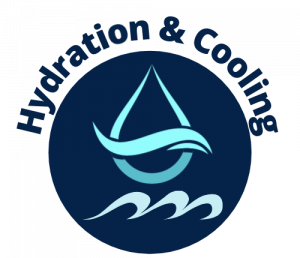Keep your team hydration equipment clean and safe with our comprehensive guide to maintaining and sanitizing sideline water stations. Learn professional protocols that prevent contamination and extend equipment life.
_______________________________
Maintaining and Sanitizing Your Sideline Water Station: Best Practices Guide
Properly maintained sideline water stations aren’t just about keeping your team hydrated—they’re about keeping them healthy. When temperatures rise and athletes need reliable hydration, the last thing you want is equipment that’s contaminated or malfunctioning. This guide walks you through essential maintenance and sanitation protocols that protect your team’s health while extending the life of your hydration equipment.
Why Proper Maintenance Matters
Sideline water stations face harsh conditions—from scorching heat to constant handling by sweaty hands. Without regular care, these stations can become breeding grounds for bacteria and develop mechanical issues that compromise their functionality when you need them most.
Teams that implement consistent maintenance protocols typically experience fewer sick days among players and coaches. Your water equipment represents a significant investment, and proper care ensures you’ll get maximum value through multiple seasons rather than facing premature replacement costs.
Daily Cleaning Protocols
After Every Use
Daily maintenance prevents buildup of contaminants and catches small issues before they become major problems:
Empty all remaining water completely—stagnant water quickly becomes a breeding ground for bacteria. Rinse the interior with clean water to remove any sediment or debris. Wipe down all exterior surfaces, paying special attention to spigots, handles, and other high-touch areas. Store equipment with lids open to allow complete air-drying and prevent moisture buildup.
Spigot and Dispenser Care
Spigots deserve special attention as they’re where contamination most often occurs:
Remove and disassemble spigots according to manufacturer instructions. Clean all components with a bottle brush and mild dish soap. Check for mineral buildup or slime—signs you need a deeper cleaning. Examine gaskets and O-rings for wear and replace them if they show cracks or damage.
Weekly Deep Cleaning Process
Even with good daily care, equipment needs regular deep cleaning to remain sanitary:
Create a cleaning solution using 1 tablespoon of unscented household bleach per gallon of water. Fill the tank with this solution and let it sit for 5-10 minutes. Make sure the solution runs through all spigots and hoses. Rinse thoroughly at least three times with clean water until no bleach smell remains. As an alternative to bleach, you can use commercial sanitizing products specifically designed for beverage containers.
Seasonal Maintenance Checklist
Before storing equipment for the off-season or bringing it back into service, perform these critical checks:
Inspect all components for cracks, leaks, or damage that could affect performance or sanitation. Check wheels and handles for smooth operation and tighten any loose hardware. Replace any worn parts, especially gaskets and seals that prevent leaks. Clean and lubricate wheels and other moving parts as needed. Store in a clean, dry area away from direct sunlight to prevent UV damage to plastic components.
Addressing Common Problems
Mold and Mildew
If you discover mold or mildew in your equipment:
Create a stronger cleaning solution using 1 part white vinegar to 3 parts water. Scrub affected areas with a non-abrasive brush. Rinse thoroughly and follow with the standard bleach sanitizing process. Allow equipment to dry completely in the sun if possible, as UV light helps kill remaining spores.
Mineral Buildup
Hard water deposits can affect taste and equipment function:
Soak affected parts in equal parts white vinegar and water for 30 minutes. Use a soft brush to remove loosened deposits. For stubborn buildup, consider using commercial descaling products specifically rated for food-service equipment.
Training Staff and Players
Proper maintenance is a team effort:
Create a maintenance schedule with clearly assigned responsibilities. Train all coaches and team managers on proper cleaning techniques. Post simplified cleaning instructions near equipment storage areas. Establish a system for reporting equipment issues so they can be addressed promptly.
Keep Your Team Hydrated and Healthy
Your sideline water station is essential equipment that deserves professional care. Investing time in proper maintenance not only protects your team’s health but also extends the life of your investment.
Need replacement parts or upgraded equipment for your hydration station? Hydration and Cooling offers a complete line of spare parts and maintenance supplies to keep your equipment in top condition. We’re here to help you implement effective maintenance protocols that work for your specific needs.
Questions? Needing Assistance?
Contact our team today at 828-820-8600 or email us for personalized advice on maintaining your specific hydration equipment. When life gets hot, we do cool!
